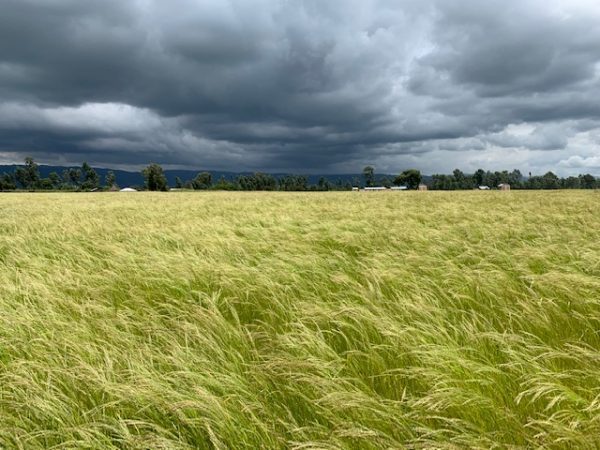Teff cluster farming Palls utilized farm
Ethiopia’s agricultural sector is the bedrock of the economy, employing more than 70% of the workforce, accounting for more than a third of GDP, and serving as the country’s largest earner of foreign exchange. Yet outdated farming practices and low productivity mean that agriculture in Ethiopia is far from reaching its potential.
Boosting output from this sector could help improve security of local staple crops like teff and to unleash significant economic growth, especially through targeting the export market. Ethiopia is already a significant exporter of coffee, oilseeds, pulses, and flowers, but adopting more modern farming practices and improving productivity could elevate forex earnings dramatically.
With its Growth and Transformation Plan for 2015–2020, the Government has recognised that the commercialisation of the agricultural sector is a major opportunity for the country. A successful commercial farming drive could vastly increase agricultural production and create many rural employment opportunities. But there are many roadblocks on the way.
From small-scale farming to commercialisation
Today, the Ethiopian agricultural sector is largely driven by small-scale and subsistence farming. Productivity and yields are low because farmers don’t have easy access to quality inputs like seeds and pesticide, and because small scale farmers are not applying the latest technologies and best practices for farm management.
Ethiopia is wrestling with a range of challenges, including limited arable land, changing weather patterns, land degradation, short fallow periods, poorly developed transport links and shortages of key skills. To thrive against the backdrop of these challenges, the country’s agricultural sector will be become more precise, more resilient and adaptive.
The policy to drive larger-scale commercial farming is a step towards improving productivity and yield per hectare. Investments in irrigation projects and transport infrastructure will, in the longer term, be key to driving the growth of agriculture. In the more immediate future, encouraging famers to use improved seed and pesticide, and to learn new-age farm management practices, could help to vastly increase yields.
New-age agricultural companies can support these efforts with new technologies and practices around seeds, crop protection and digital farming technology. For example, continuous improvement to herbicides and insecticides can help farmers stay ahead of threats to their crops and protect their yields. As demand for food increases worldwide, better seed choices allow farmers to maximise productivity while building a sustainable future.
Precision farming
In years to come – as commercialisation gathers pace – farmers in Ethiopia will be able to use digital technology to improve productivity and yields. Cloud-based farming applications, drones, intelligent sensors, and other devices are clearing the way for farmers to use digital technology to address some of their most pressing challenges with precision agriculture techniques.
Precision agriculture is about using real-time information to ensure that crops, water, fertiliser, pesticides and soil are managed in a manner that produces the optimal yield while ensuring environmental sustainability. The tools of this trade – satellite imaging, drones, Internet of Things sensors, data analytics – are becoming more accessible to small-scale commercial farmers all the time.
Even though Ethiopia has successfully diversified its economy over the past decade with a fast-growing services sector, growing and modernising agriculture is key to sustaining Ethiopia’s economic wellbeing. There is an opportunity for the country to adopt the latest technology and techniques to elevate agricultural production and become a major global player in agriculture in the years to come.
Distributed by APO Group on behalf of Corteva.








